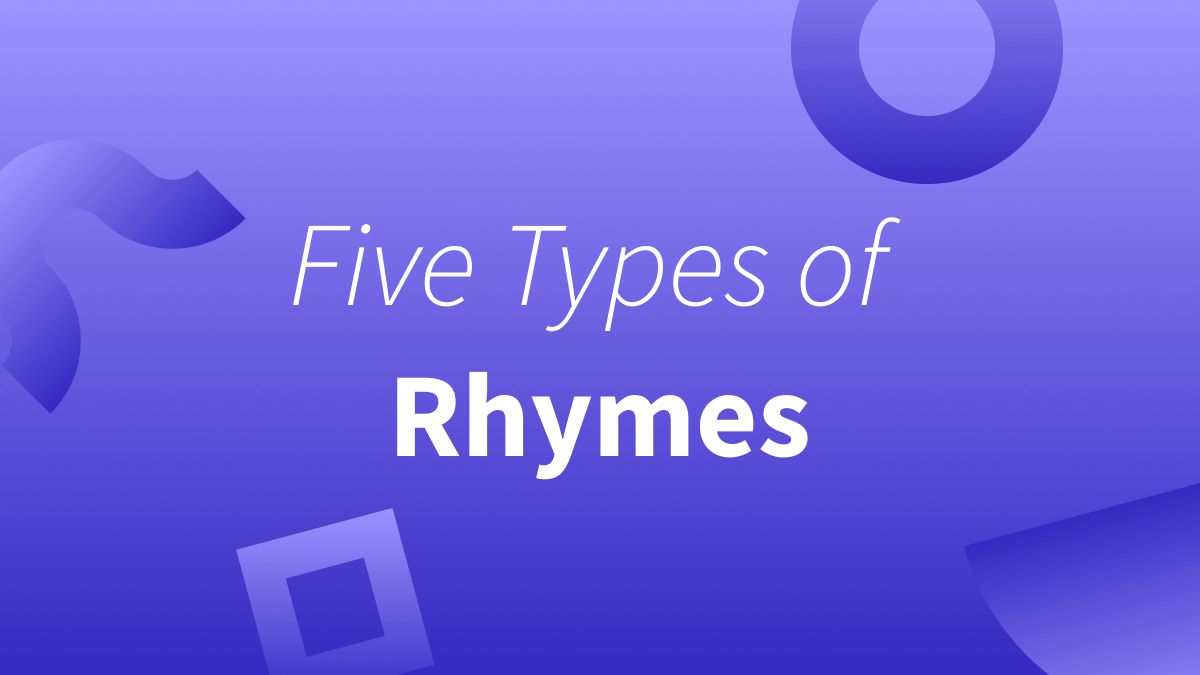Table of Contents
What Is a “Rhyme”?
A rhyme is the “repetition of similar sounds within two or more words.” Typically, the corresponding sounds are found near their endings. For example, the words bark and dark are a type of rhyme, as are high and five.
Rhymes are foundational in poetry and songwriting, as they add structure that can help emphasize or link ideas and create memorable patterns.
The word rhyme can also be used as a verb, meaning “to write or say something that includes words that contain similar sounds that create a sense of musicality or rhythm.”
Our teacher challenged us to rhyme as many words as we could with “orange.”
As kids, my brothers and I used to rhyme for fun and create silly songs.
Whenever I write a birthday card for someone, I try to rhyme and come up with a whimsical message.
Five Common Types of Rhymes
There are several types of rhymes—some are more intricate and complex than others. Below, we’ll review five common categories and provide brief explanations and examples.
1. Perfect Rhyme
When most people think of rhymes, they imagine perfect rhymes (also known as true, exact, or full rhymes). Perfect rhymes occur when the stressed vowels in both words are identical.
Moon and tune
Star and far
Celebrate and delegate
Elevation and revelation
Dangerous and contagious
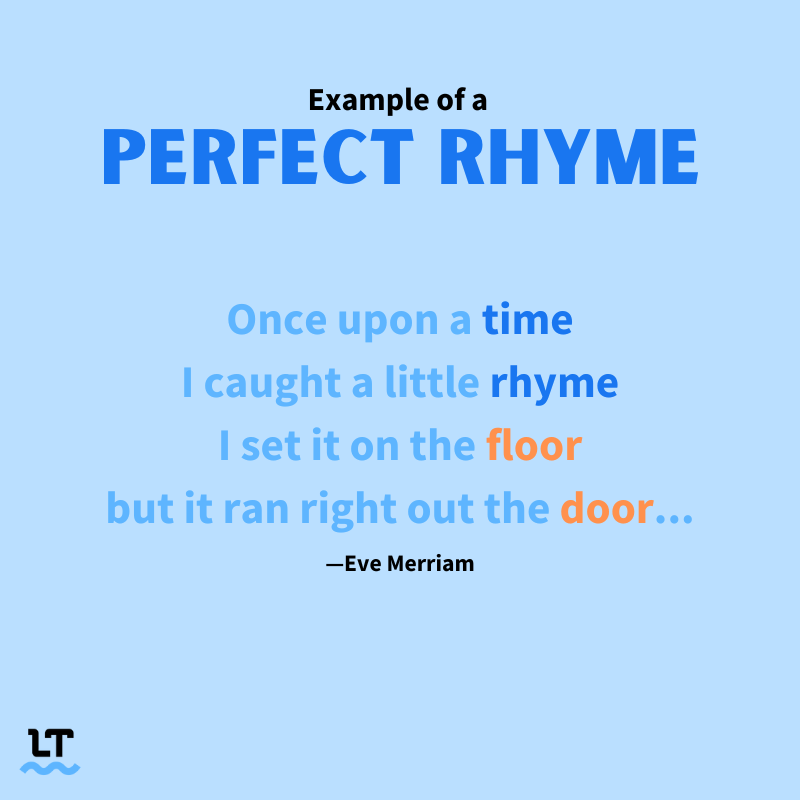
2. Slant Rhyme
A slant rhyme is a type of rhyme in which multiple words have similar—but not exact—sounds. These rhymes are also known as imperfect, half, or near rhymes.
Worm and swarm
Crate and braid
Young and long
Moon and mine
Bold and bald
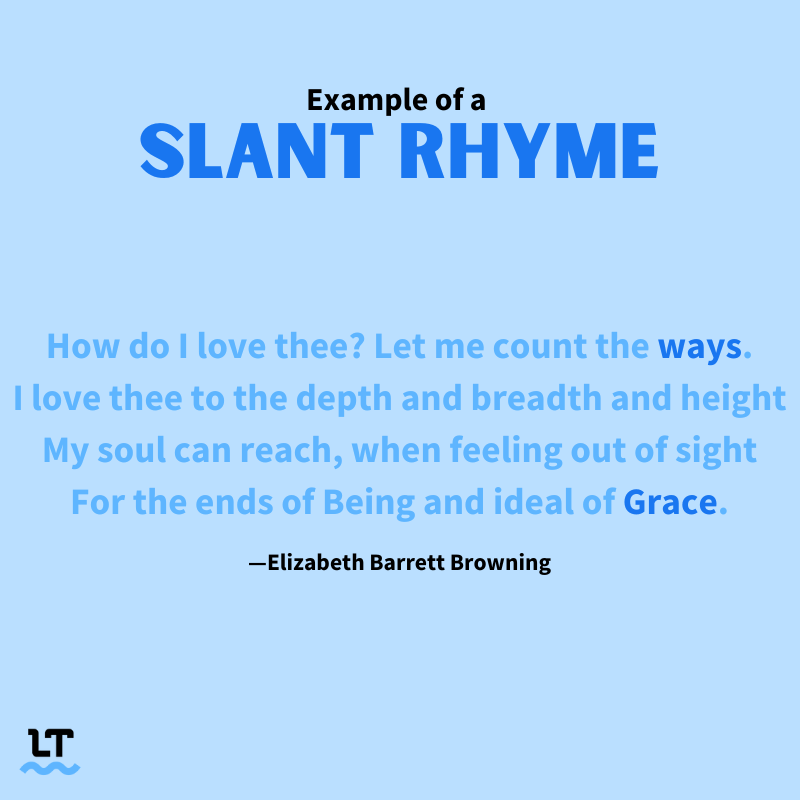
3. Eye Rhyme
Eye rhymes—also known as visual or sight rhymes—occur when two words are spelled similarly and look like they would be pronounced the same but aren’t.
Though and tough
Womb and bomb
Love and move
Laughter and daughter
Height and weight
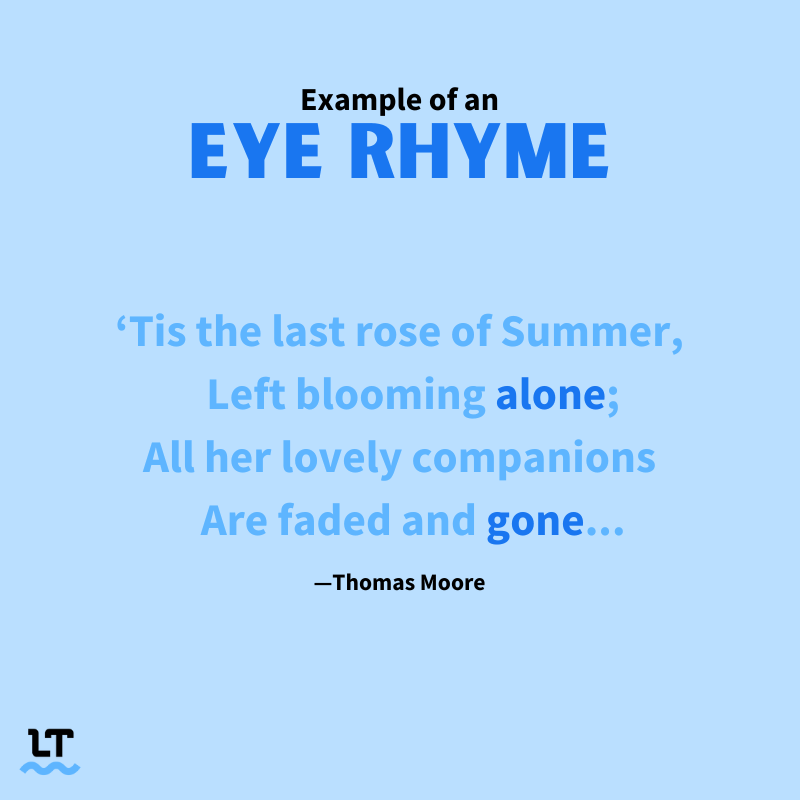
4. End Rhyme
End rhymes emerge when the corresponding sounds are located at the end of a verse, lyric, or line. They can incorporate eye, slant, perfect rhymes, and many others. Put simply, end rhymes refer to the positioning of rhyming words.
The stars above shine so bright,
Making me fall in love with the night.
The wind blows with a force so grand,
Wreaking havoc all throughout the land.
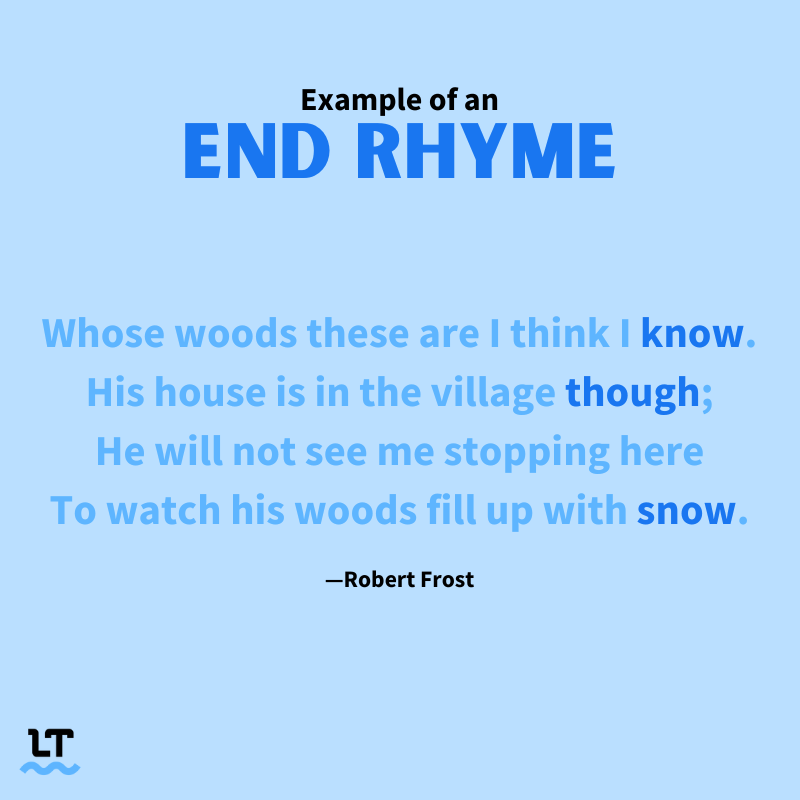
5. Internal Rhyme
Internal rhymes are also determined by their placement. They can occur within a single line of poetry, or between a word within a line and another word at the beginning or end of the same line.
Their feet tapped to a beat as they walked right past me.
The rain falling gently,
helped me stay sane,
silencing pain while whispering peace.

Add Rhythm To Your Writing
Texts don’t require rhymes to flow smoothly. If you’d like to polish your text, using LanguageTool as your writing assistant can be incredibly beneficial. Not only does it help by correcting grammatical errors, but it can also aid in refining the rhythm and flow of your sentences. So, whether you’re penning a poem, crafting a song, or aiming for more lyrical prose, LanguageTool can help you hit the perfect notes. Try it out today!
